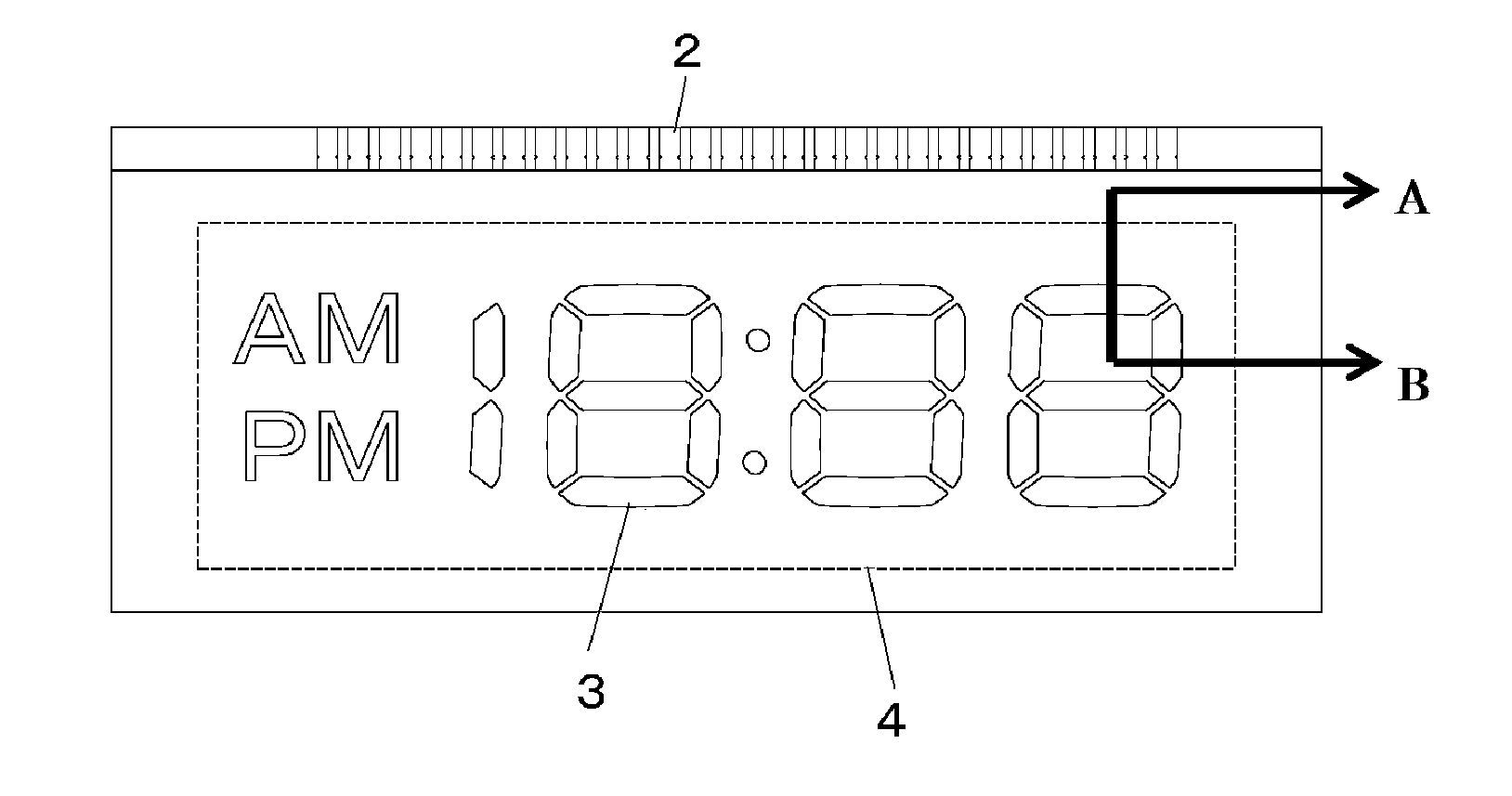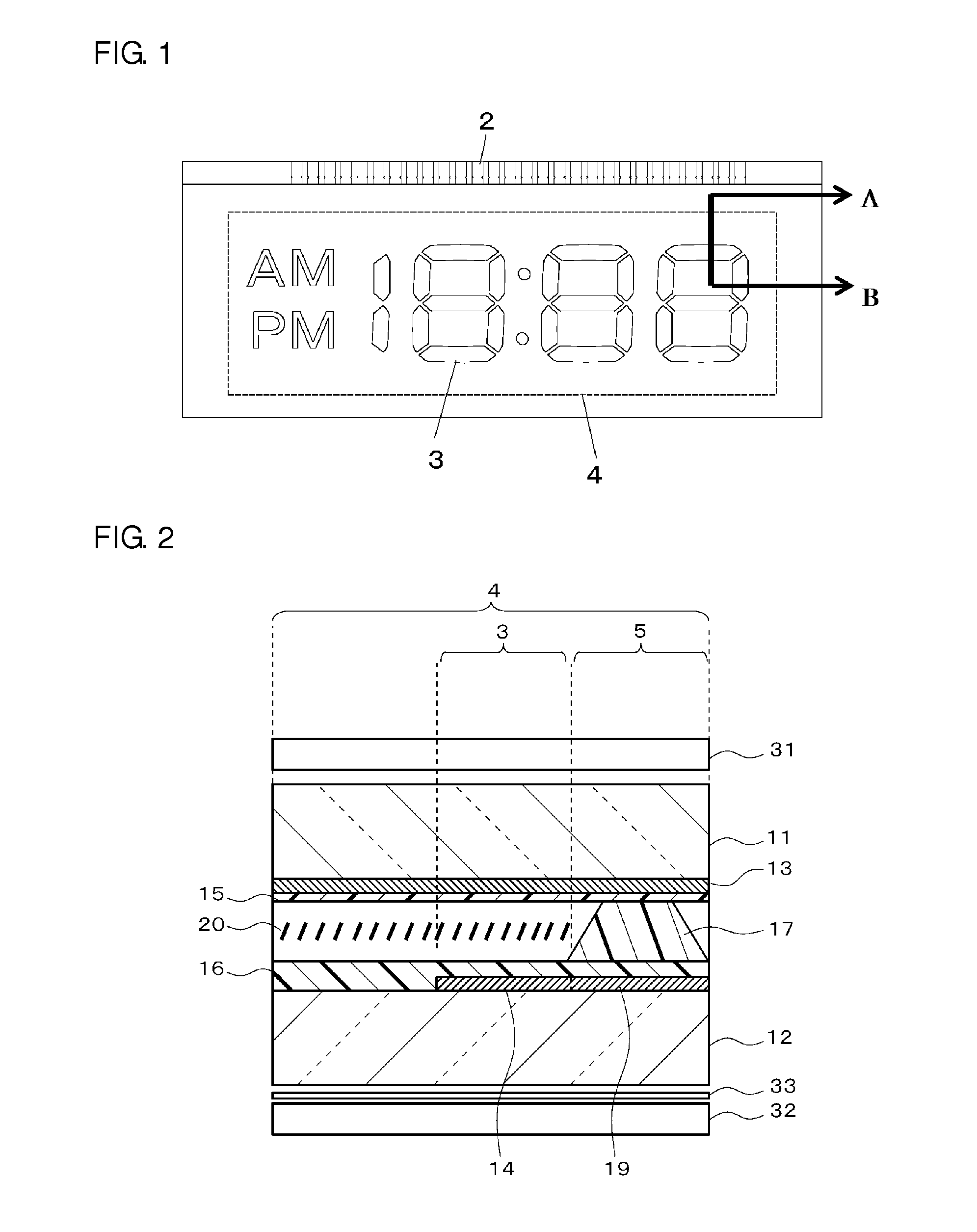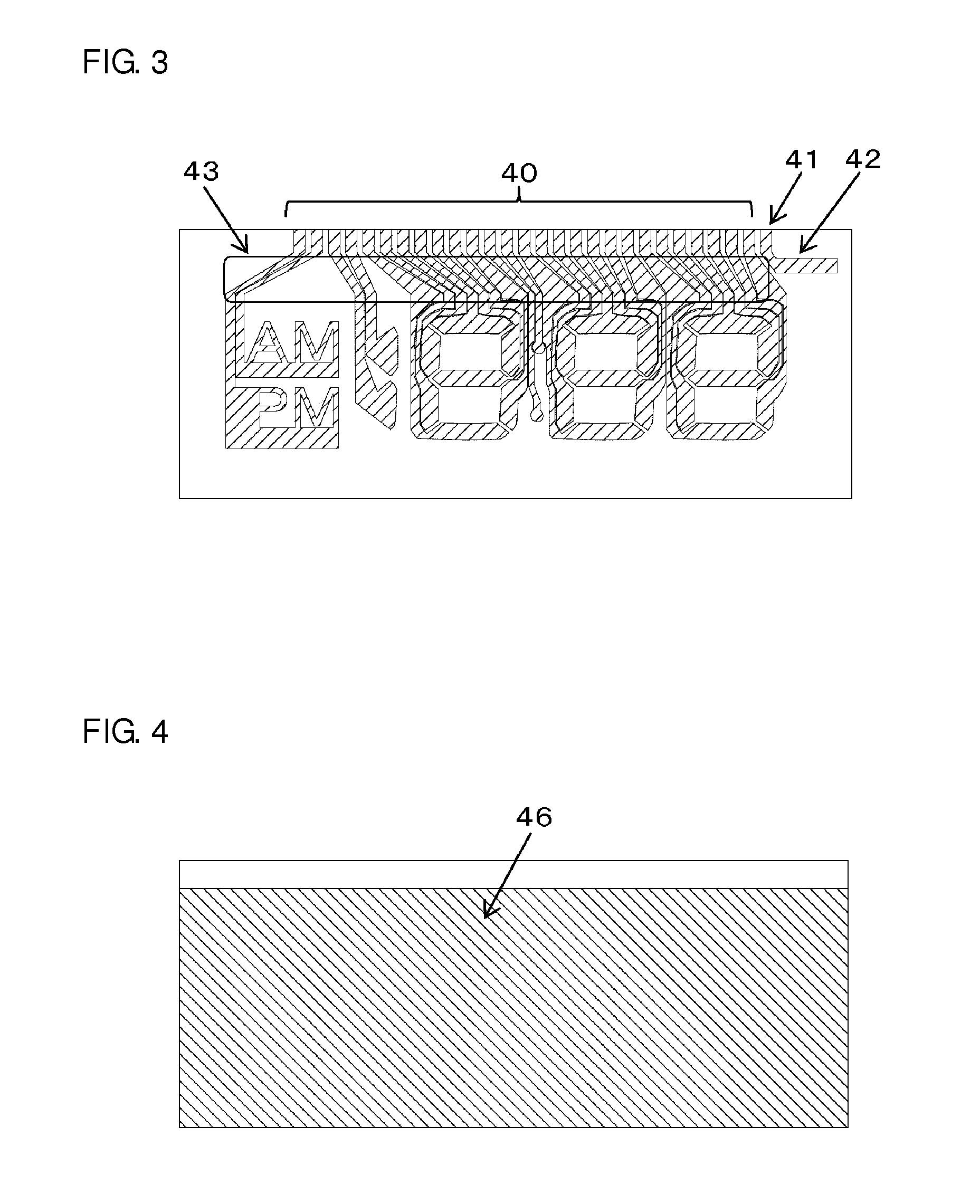Liquid crystal display
- Summary
- Abstract
- Description
- Claims
- Application Information
AI Technical Summary
Benefits of technology
Problems solved by technology
Method used
Image
Examples
example 1
[0058]An example of a liquid crystal display in which the upper and lower substrates are glass substrates is now explained.
[0059]Prepared was a substrate having a sheet resistance of 30 n / sq. obtained by one face of a blue plate glass with a thickness of 0.7 mm being polished and subject to a SiO2 undercoat, and a transparent conductive film made of ITO (indium tin oxide) thereafter being deposited on the entire face of the substrate surface. Segment electrodes and routing wires were formed on one face of the substrate by patterning the transparent conductive film via the photolithography process and the wet etching process.
[0060]A vertical alignment film with surface free energy of 35 to 39 mN / m was pattern-printed on this substrate (hereinafter referred to as the “lower substrate”) within the seal frame via the flexographic printing method, tentative calcination was performed at 90° C. for 15 minutes, then main calcination was performed at 180° C. for 30 minutes. Subsequently, bot...
example 2
[0067]An example of a liquid crystal display in which a film substrate is used as the upper substrate, and a glass substrate is used as the lower substrate is now explained.
[0068]An ITO transparent conductive film was deposited, in a thickness of 200 nm, on a white plate glass with a thickness of 0.3 mm by using an in-line sputtering device, and segment electrodes and routing wires were formed on one face of the substrate by patterning the transparent conductive film via the photolithography process and the wet etching process.
[0069]A vertical alignment film with surface free energy of 35 to 39 mN / m was pattern-printed on this substrate (hereinafter referred to as the “lower substrate”) within the seal frame via the flexographic printing method, tentative calcination was performed at 90° C. for 15 minutes, then main calcination was performed at 180° C. for 30 minutes. Subsequently, both substrates were subject to the rubbing process based on the conditions of pushing depth of 0.6 mm...
PUM
 Login to View More
Login to View More Abstract
Description
Claims
Application Information
 Login to View More
Login to View More - R&D
- Intellectual Property
- Life Sciences
- Materials
- Tech Scout
- Unparalleled Data Quality
- Higher Quality Content
- 60% Fewer Hallucinations
Browse by: Latest US Patents, China's latest patents, Technical Efficacy Thesaurus, Application Domain, Technology Topic, Popular Technical Reports.
© 2025 PatSnap. All rights reserved.Legal|Privacy policy|Modern Slavery Act Transparency Statement|Sitemap|About US| Contact US: help@patsnap.com



